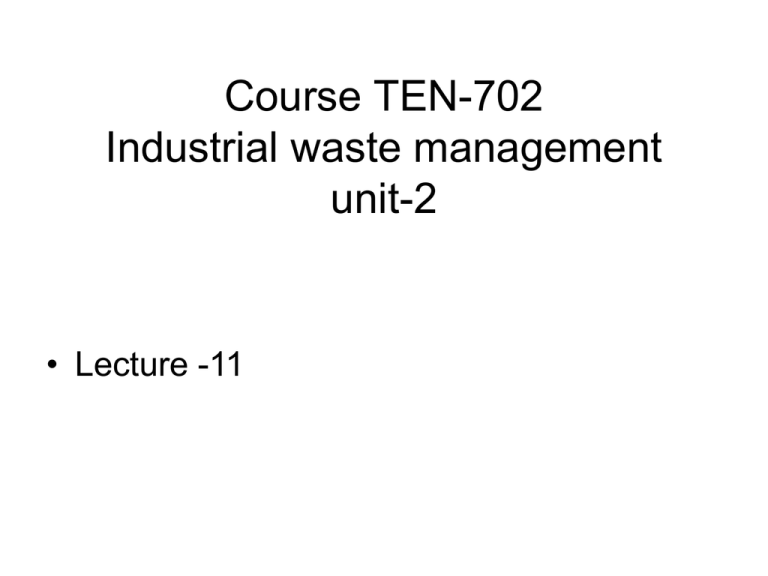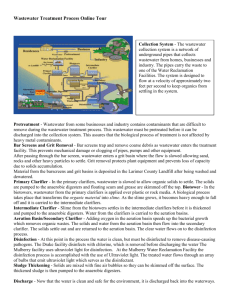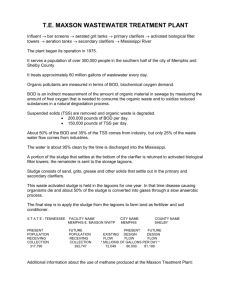Course TEN-702 Industrial waste management unit-2 • Lecture -11
advertisement

Course TEN-702 Industrial waste management unit-2 • Lecture -11 Pretreatment • Every plant needs some pretreatment • Minimum pretreatment is coarse screening • As plants become larger, mechanical screening and grit removal are standard • Odor control and flow equalization are common Primary Clarification • Primary clarification is reported to be the “oldest and most widely used unit operation in wastewater treatment.” • Developments in the technology of wastewater treatment in chronological order: – – – – Outhouses Sewage flowing in gutters Convey raw sewage via pipe to discharge Primary clarifiers added as treatment step before conveying wastewater to discharge Primary Clarification • Goal of primary clarification is to produce effluent that leads to economical wastewater treatment • Primary clarification provides some measure of flow equalization • Primary clarifiers remove floating material and scum • Prevalence of primary clarifiers – Essential at larger wastewater plants – Not necessary at small plants for most activated sludge processes Circular Clarifiers Primary Clarification • Circular primary clarifier can be round or rectangular Primary Clarification Primary Clarification Primary Clarification • Primary clarifiers are similar to final clarifiers – Designed to settle solids – Includes scum removal – Quiescent (non-turbulent) conditions are important – Weirs and baffles Primary Clarification • Differences between primary and final clarifiers – Primary clarifiers can receive larger hydraulic loadings – Primary clarifiers typically more shallow in depth – Primary sludge has more difficult pumping requirements because it has higher percent solids – Reliability and redundancy of primary clarifiers not so critical as with final clarifiers Primary Clarification • Solids and organics removal in primary clarifiers – 50% TSS removal – 25% BOD removal Primary Clarification • Primary clarifiers – Except at larger plants, not common given desire to control cost – Beneficial to the treatment process due to buffering of influent loading and flow to downstream secondary processes – Can impact biological nutrient removal processes because of the removal of BOD In next lecture we will discuss mixing, coagulation, and flocculation Thanks!


